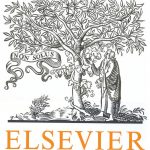
ترجمه مقاله نقش ضروری ارتباطات 6G با چشم انداز صنعت 4.0
- مبلغ: ۸۶,۰۰۰ تومان

ترجمه مقاله پایداری توسعه شهری، تعدیل ساختار صنعتی و کارایی کاربری زمین
- مبلغ: ۹۱,۰۰۰ تومان
Introduction
In the knowledge Era, we are living, the management of intangible assets, namely the management of knowledge assets, has become crucial to organizational sustainable competitive advantage. A sustainable competitive advantage derives of the implementation of a strategy that adds value (Barney, 1991), and depends on a strategic advantage which can offer favorable terms or block their ability to achieve superior results (Besanko, 2000).
Knowledge in the new economic landscape is a critical ingredient to reach the sustainable competitive advantage (Kane et al., 2005). In this sense, the identification of knowledge assets determinants to the organizational sustainable competitive advantage is of pivotal importance. In such a competitive time, there are evident signs that information and knowledge are actual competitive “weapons” for organizations, which have the best information and dominate it more efficiently.
Discussion and Conclusions
The study shows that human capital, information systems and processes are, in this order, the organizational dimensions which represent the knowledge management construct. Sustainable competitive advantage, clear distinguish the financial and customers dimensions. The financial dimension is closely related with return on investments and business assets, growth sales and market share of organizations. The customers dimension is strongly associated with new products sales and meeting customers’ expectations, in order to attract and retain them, providing a valuable customer base crucial for the success of business.
The study findings suggest that HC and PRO variables result in high levels of CA, and IS indirectly impact CA through the mediation effects of HC and PRO. HC and PRO are directly linked to business outcomes stressing the importance of employees’ knowledge and the processes and practices to incentive knowledge acquisition and dissemination for the commercial and financial success of the organization. These empirical results are consistent with theoretical approaches which suggest that HC and PRO can increase organizational CA. In addition, to generate new knowledge, companies should make connections with existing knowledge and, expanding its network of internal and external relationships (Eboli, 2004).